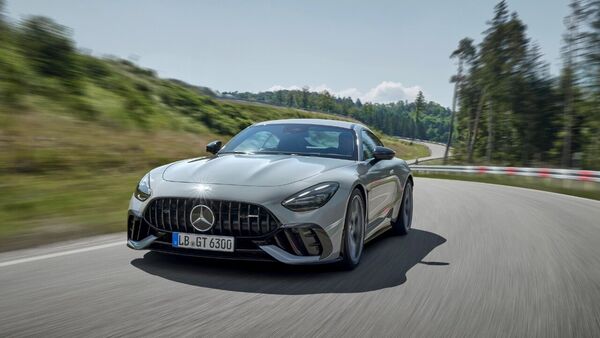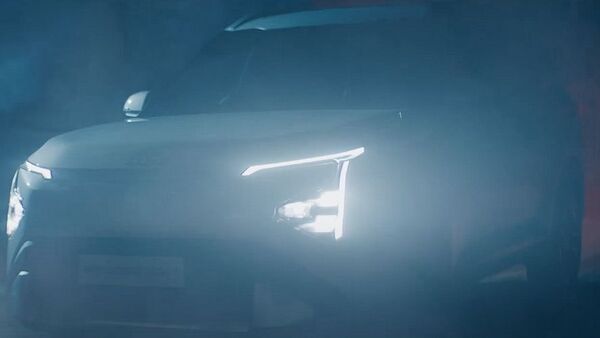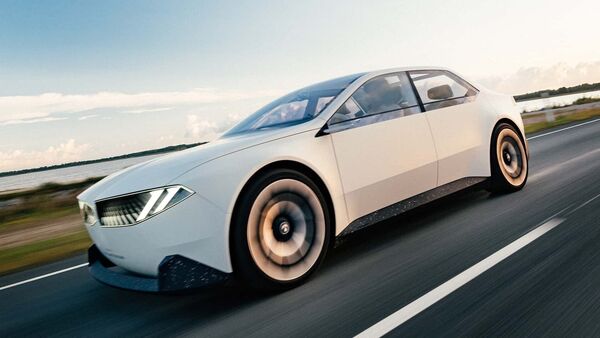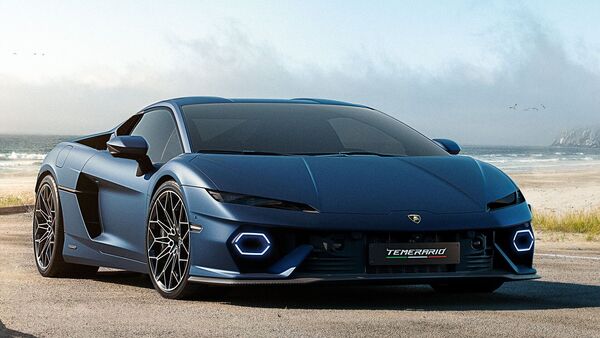
India Auto Story 2024 Special Report: Of opportunities, challenges and you
6 months ago | 5 Views
India, the land of diversity, of contrasts and of enormous potential. People, the cultures, the languages and the tastes and preferences vary in our country like nowhere else. Mobility, therefore, is one of the several unifying factors that binds us all together. But personal mobility has been a whole different arena. With penetration of personal cars still one of the lowest anywhere in the world, and two-wheeler adoption only a few shades better, the automotive landscape of India continues to offer opportunities – and throw up challenges - not found anywhere else. Where do you find yourself in all of this?
India is the world’s third-largest vehicles’ market, behind only China and the United States. The country overtook Japan last year. Data shows around 48 per cent of Indian households own at least one two-wheeler. But when it comes to passenger vehicles (PVs) the devil lies in the details. In the US, for instance, there are 580 cars for every 1,000 persons. China has 183 cars for every 1,000 of its citizens.
Even developing countries like Mexico (280) and Brazil (276) fare better in terms of penetration of four-wheelers. In India, government data shows 26 cars for every 1,000 citizens. Chances are that since you are reading this in the country’s leading English automotive website, your family may at least own one car.
But what about masses at large? Here is where the enormous potential for growth lies.
March of the Indian Automotive Market
Did you know that car sales in India grew by 35 per cent between 2019 and 2023? As per automotive research firm S&P Mobility, this was the best car sales turnaround after the Covid-19 pandemic in the world. Factors such as demand outstripping supply, pent-up demand, semi-conductor shortage and even YOLO (You Only Live Once) were hot topics for assessment up until late 2023.
And then something changed. Something not entirely unexpected.

Most manufacturers improved production capabilities, the supply-chain issues got sorted and ‘normalcy’ returned. Discretionary spending was no longer for personal mobility requirements alone as was during lockdown times and as the country - and the world - opened up all gates post pandemic, spending patterns went back to pre-pandemic times. Clearly then, 2024 was never going to be another year of record sales for manufacturers. “This was always coming. This year has not been out of the ordinary (in terms of sales), just return to the ordinary or what the patterns were like before pandemic," Santosh Iyer, MD and CEO, Mercedes-Benz India, tells HT Auto. “We are not concerned because the indications remain strong and the festive period will continue to bolster the Indian automotive market as a whole, as it always has."
And while the luxury car space in which Mercedes competes in remains very small, the trends are similar in the mass-market arena too. “We are coming from a very high base and so, growth was supposed to be in single digits. The first five months, due to elections and severe heatwave in north India, growth has been very muted. But with festival season starting and good monsoon, we are witnessing rural market is responding pretty well," Partho Banerjee, Head of Marketing and Sales at Maruti Suzuki India Limited tells HT Auto. “We expect car sales to bounce back."
Banerjee and most other industry leaders also point to the cyclical nature of the Indian car market where trends for sales fluctuate. And festive period usually brings back discounts that makes customers the king. “2022 and 2023 were characterized as seller’s markets, but 2024 (has) marked a distinct pivot towards a buyer's market," says Puneet Gupta, Director, Indian Automotive Market, S&P Global Mobility. “Discounts and incentives, virtually nonexistent in 2022/23, (have) flooded the market in 2024."
But what about options with fewer wheels – two wheels less to be precise?
Two to Tango, Finally!
The two-wheeler segment is an entirely different playfield. It has gone through a severe rough patch that traces its origins to even events further back than Covid-19 pandemic. The power players here – Bajaj, TVS, Hero, Honda Motorcycles and Scooters India (HMSI), and others have seen both domestic as well as export volumes grow with each passing month of the year, in a year-on-year basis. While many attribute a steady progress in economic condition of the country as a key factor, there are also those who point to a growing need for mobility options in a ‘Work from Office’ setup.
Yogesh Mathur, Director of Sales and Marketing at HMSI, further notes that the bounce back is stronger in urban areas has been stronger even though rural areas remain the backbone of the two-wheeler market. “We were expecting is that the two wheeler industry this year will grow by somewhere around 10 per cent to 12 per cent. But now, it is already growing by 16 per cent and especially if we bifurcate that into scooters and motorcycles," he explains. “Scooter growth is roughly around 24% and motorcycle is around 13% averaging around 16% so this clearly indicates which area is growing. It's primarily an urban area which is showing a positive trend as compared to the rural area."
As per Jefferies, a US-based financial services’ company, Indian two-wheeler segment is set to outpace the broader industry with compound annual growth rates (CAGR) of 14 per cent. And within the two-wheeler segment overall, electric scooters and bikes are expected to continue leading India’s electric ambitions. Jefferies notes that share of electric two-wheelers in India’s overall two-wheeler space has grown from 0.4 per cent in FY2021 to seven per cent by CY2023, and growing further still – 10 per cent by FY2026 and 13 per cent in FY2027.
Cost of manufacturing too has been brought under control with significant rise in metal prices between FY21-23 now moderating. This again could be a key factor allowing manufacturers to pass over the benefits to customers in order to bolster buying sentiments.
India on the move: Vision for the Future
As the world moves ever closer to embracing new-age technology in the automobile space, the Indian market is keeping pace. And how. ADAS or Advanced Driver Assistance Systems are now increasingly common in ‘affordable’ vehicles and the trend is likely to continue. Electric vehicles were unheard of a few years back but are now gradually taking over roads. Safety features are becoming standard and aplenty on models across price spectrums.
But beyond specifics, the contribution of Indian automobile sector to the economic growth of the country remains extremely crucial. Did you know that this sector alone contributes to around seven per cent of India’s GDP and accounts for around eight per cent of the total exports? Prime Minister Narendra Modi himself acknowledged the faring of the industry while also urging for sustained efforts towards cleaner mobility. “At this critical juncture for India and the world, it is essential that our automobile sector set not only an example for others to follow, but also work towards bringing global best practices to India," he said during the 64th annual convention of Society of Indian Automobile Manufacturers in September. “Working (on) greener and cleaner mobility is a vital step in this direction. It is important that this climate-conscious and sustainable vision resonates with domestic and international partners."
So what does the path ahead look like?
Ever expanding road network in India – currently the second longest, after the US, will continue to bolster the country’s automobile prospects. New or updated four-lane and two-lane highways are powering demand, with Nitin Gadkari - Union Minister for Road Transport and Highways – pointing to this as the lifeline of the country. With new and improved roads will come the potential for greater demand for automobiles.
The strengthening of the automobile sector will also bolster employment opportunities which generates 37 million jobs – direct and indirect – at present. And with 50 million EVs expected to be on roads here by 2030, the spread of support infrastructure too is likely to continue. Public EV charging network grew from 1,800 stations in February of 2022 to over 16,000 in next two years. The eventual goal is to take it to 46,000 by 2030.
Affordability will also play a huge role in deciding the fate of the sector. While a growing middle-class augers well for the mass-market segment, FAME III (Faster Adoption and Manufacturing of Electric Vehicles) policy is in the works and has the potential to further amplify EV adoption here.
All in all, it is a good time to be in the business of automobiles despite the fast-paced nature of the sector. And in a country as diverse in India, mobility needs will remain robust and pave the way forward.
Read Also: Tata Curvv and Curvv EV: What makes them Bharat NCAP 5-star rated cars?
HOW DID YOU LIKE THIS ARTICLE? CHOOSE YOUR EMOTICON !
# India # EV # SUV




















